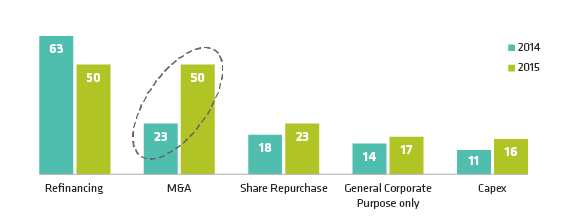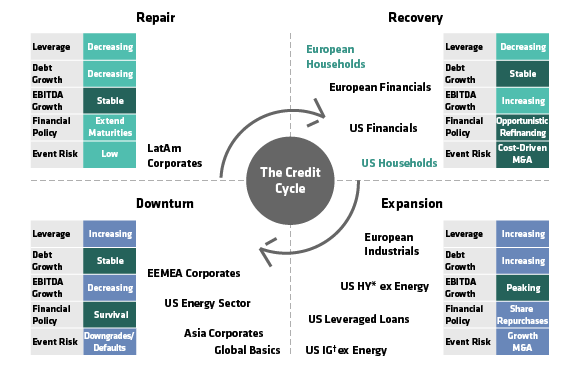-
The views expressed herein do not constitute research, investment advice or trade recommendations and do not necessarily represent the views of all AB portfolio-management teams.
Why It Pays to Keep an Eye on the Credit Cycle
Jan 27, 2016
3 min read
M&A Activity On The Rise
Issuance Elevated by Large-Cap M&A Use of Proceeds (Percent)

As of December 31, 2015
Source: Deutsche Bank
Credit Cycle Continues To Advance, But Stage Varies Widely By Sector

As of December 31, 2015
*High yield
†Investment grade
Source: AB
About the Authors